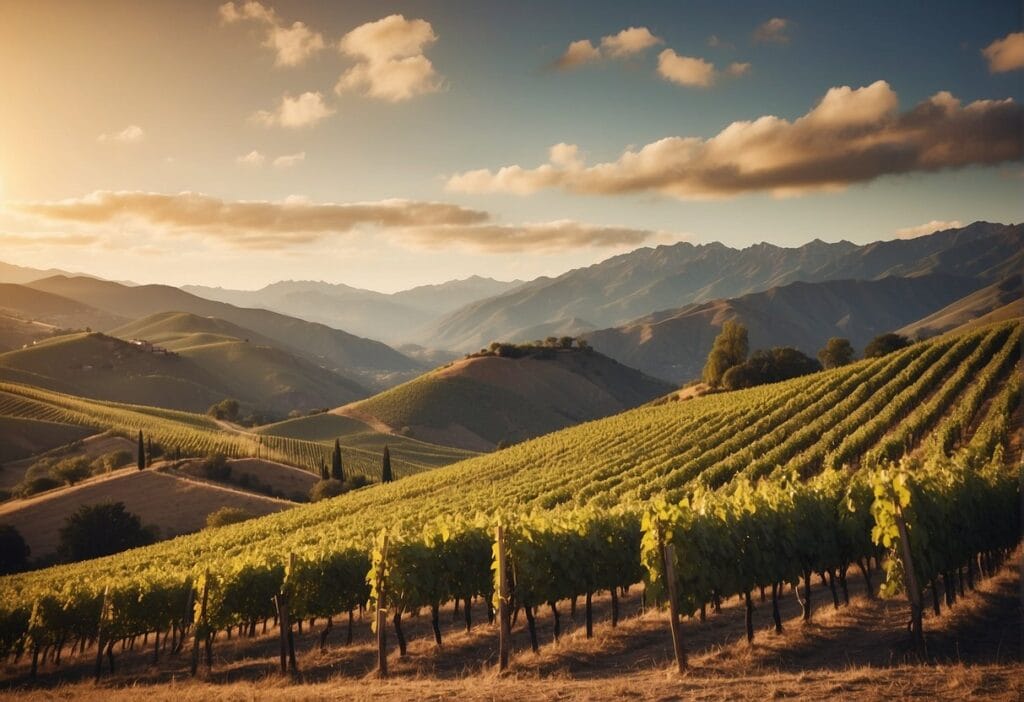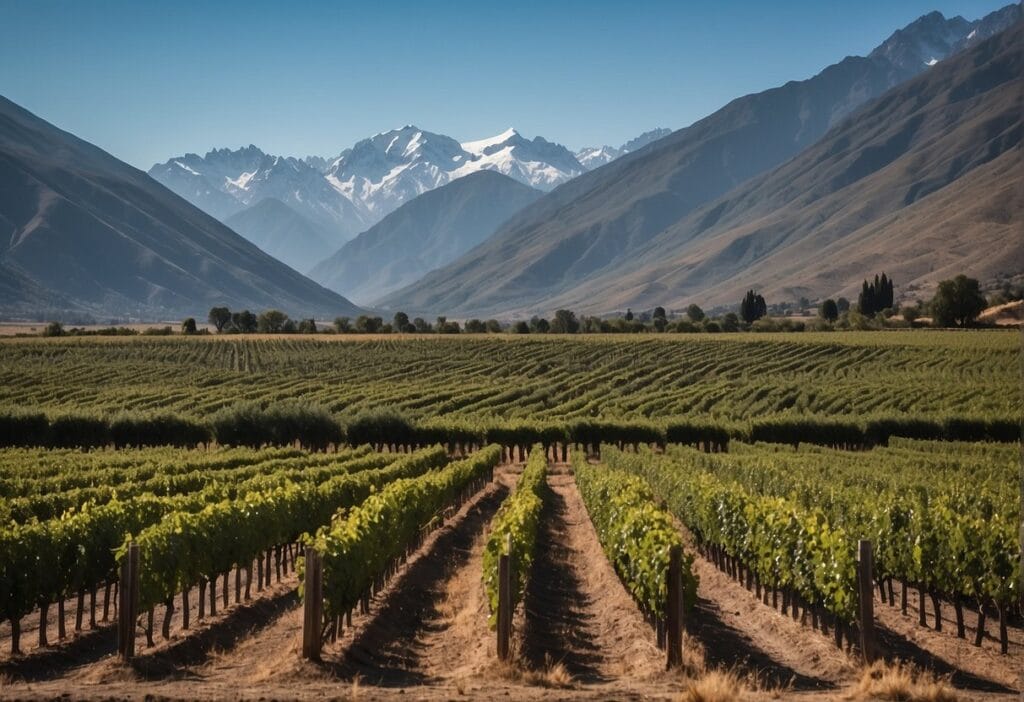Nestled in Italy’s northeastern corner, Veneto stands out as a dynamic wine region. You may encounter its rolling vineyards that stretch from the shores of Lake Garda to the foothills of the Alps and down to the Adriatic Sea. The diversity in geography gives rise to a range of microclimates and soils, allowing a variety of grapes to thrive.
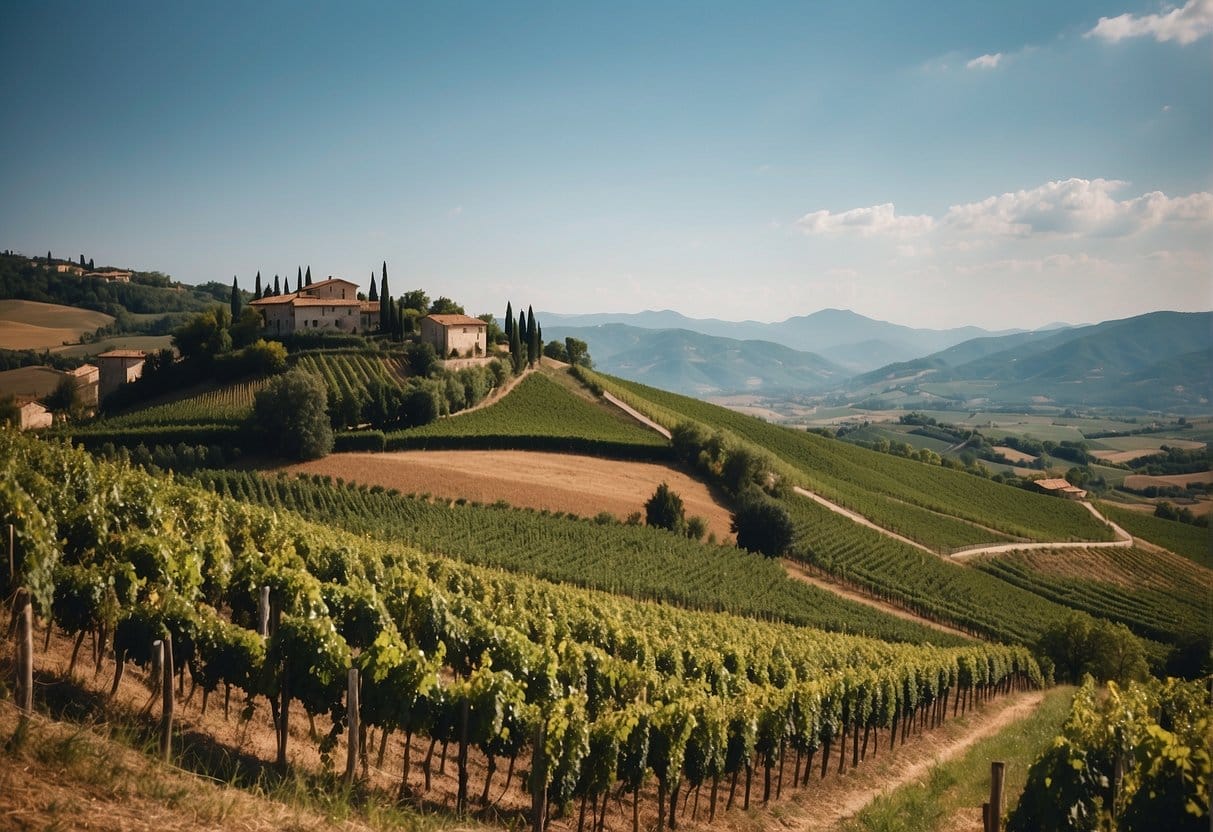
The area is steeped in winemaking history, with techniques that have been refined over centuries. In Veneto, modern innovation blends with tradition to produce wines that are appreciated worldwide. You’ll find celebrated reds such as Valpolicella and Amarone, as well as the effervescent Prosecco, which calls this region home. Understanding Veneto’s wines gives a glimpse into the region’s rich tapestry of culture and history.
Key Takeaways
- Veneto’s diverse geography fosters a variety of wines.
- Traditional and modern winemaking techniques coexist in the region.
- Veneto is renowned for wines like Prosecco, Amarone, and Valpolicella.
History and Geography
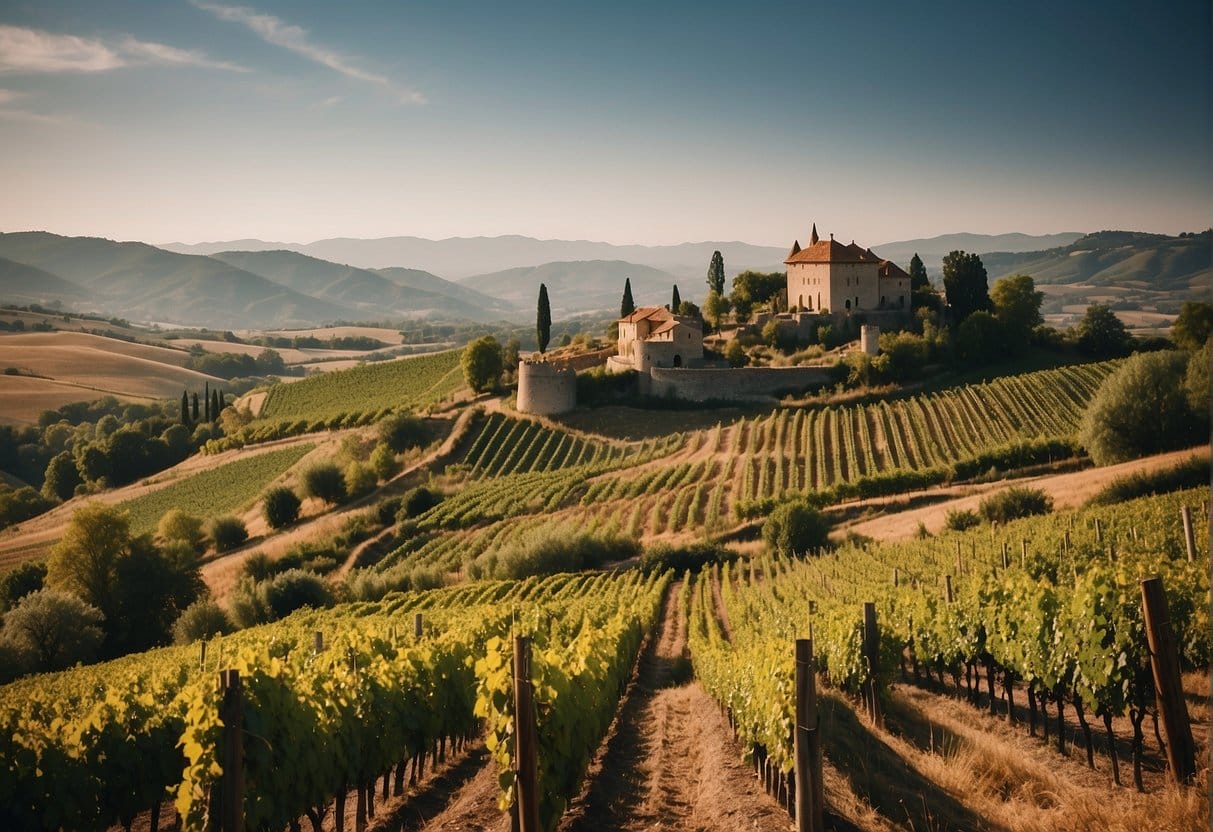
When you explore Veneto, you’re delving into a region steeped in winemaking tradition, surrounded by the majestic Alps in the north and marked by a rich Roman past. Let’s uncover the historical and geographical essences that make Veneto wines truly unique.
Historical Significance
Veneto’s winemaking tradition dates back to the Roman era, making it an integral part of the region’s cultural heritage. The wines you enjoy today are the result of centuries of refinement and local expertise. Venetian wine, often synonymous with innovation and quality, has evolved through the Republic of Venice’s trade dominance, which allowed for winemaking techniques to spread and flourish.
Geographical Landscape
Veneto’s geographical diversity is astounding. Nestled between the spectacular Alps to the north and the Adriatic Sea to the east, the region benefits from a variety of microclimates.
These conditions are perfect for cultivating a wide range of grape varieties, giving rise to a plethora of unique and expressive wines, with each area lending its signature to the flavor. From the fertile plains influenced by the Piave and Adige rivers to the picturesque vineyards surrounding Lake Garda, Veneto’s landscape is as complex as its wines.
Winemaking in Veneto
As you explore the Veneto wine region, you’ll discover a remarkable array of grape varieties and winemaking techniques that have been perfected over centuries.
Grape Varieties
In Veneto, you’re stepping into the heartland of some of Italy’s most celebrated grapes. The reds are dominated by the native Corvina, partnered frequently with Rondinella and Corvinone; these three are the mainstays behind the powerful Amarone and the lighter Valpolicella wines.
Merlot and Pinot Grigio, though not indigenous, have found a welcoming home in Veneto as well. As for whites, the Garganega grape is the star behind the crisp and refreshing Soave, while Glera is the key to the universally adored Prosecco.
- Red Grapes: Corvina, Rondinella, Corvinone, Merlot
- White Grapes: Garganega, Pinot Grigio, Glera
Winemaking Techniques
The winemaking techniques in Veneto are as diverse as the grapes themselves. The celebrated method of Appassimento, involves partially drying the harvested grapes to concentrate their flavors before fermentation. This process is essential for creating the rich and luscious Amarone as well as the sweeter Recioto.
On the other hand, the production of Prosecco utilizing the Charmat method, where the secondary fermentation occurs in steel tanks rather than in the bottles, ensures a fresh and vivacious bubble, capturing the essence of Glera grapes.
- Appassimento: Drying of grapes for richer wines
- Charmat Method: Tank fermentation for lively Prosecco
Your journey into wine production in this region reveals a blend of age-old tradition with modern innovation, each bottle a story of its native soil.
Key Wine Styles and Denominations
In the Veneto wine region, you’ll find a rich variety of wines that are intrinsically tied to their location and method of production. From bright Proseccos to intense Amarones, each designation and style tells a unique story of the region.
Denominazione di Origine Controllata (DOC)
Veneto boasts a number of DOC areas, where regulations ensure that wines meet strict standards of production and quality. Soave DOC, for example, is known for its aromatic and refreshing white wines, primarily from the Garganega grape. Then there’s Valpolicella DOC, where you can delight in a range of reds from the light and fruity style to the more full-bodied Ripasso. Not to be missed is Bardolino, another red wine style that captivates with its cherry and herbal notes.
Denominazione di Origine Controllata e Garantita (DOCG)
Within the elite ranks, DOCG marks the highest quality level. The legendary Amarone della Valpolicella DOCG is a must-try, delivering a robust red that’s rich in flavor. If you prefer something white and sparkling, then Prosecco Superiore DOCG, originating from the hills between Conegliano and Valdobbiadene, is your go-to. And for those with a sweet tooth, the dessert wine Recioto della Valpolicella DOCG offers a luscious experience.
Wine Styles and Types
- Amarone: A powerhouse red with complex flavors, often described as dry, full-bodied, with an intense aroma.
- Prosecco: Available in Spumante (fully sparkling) and Frizzante (lightly sparkling) forms, perfect for celebrations or as an aperitif.
- Soave: This white wine ranges from Classico, denoting the original and often superior zone, to the fine and age-worthy Soave Superiore.
- Valpolicella: Including Ripasso, which uses a technique involving re-fermented grape skins to add richness and depth to the wine.
- Recioto: A sweet wine often enjoyed as a dessert, rich and velvety, with notes of dried fruits and spices.
- Bianco di Custoza: A refreshing and harmonious blend of several white grape varieties, embodying the lightness and zest characteristic of the region’s whites.
- Riserva: Wines that have undergone longer aging and demonstrate extra complexity, often indicating a higher tier of quality.
Remember, when you’re exploring these wines, each sip offers a taste of Veneto’s history and tradition, ensuring that you’re drinking more than just a wine—you’re experiencing a piece of Italian culture.
Famous Wine-Producing Zones
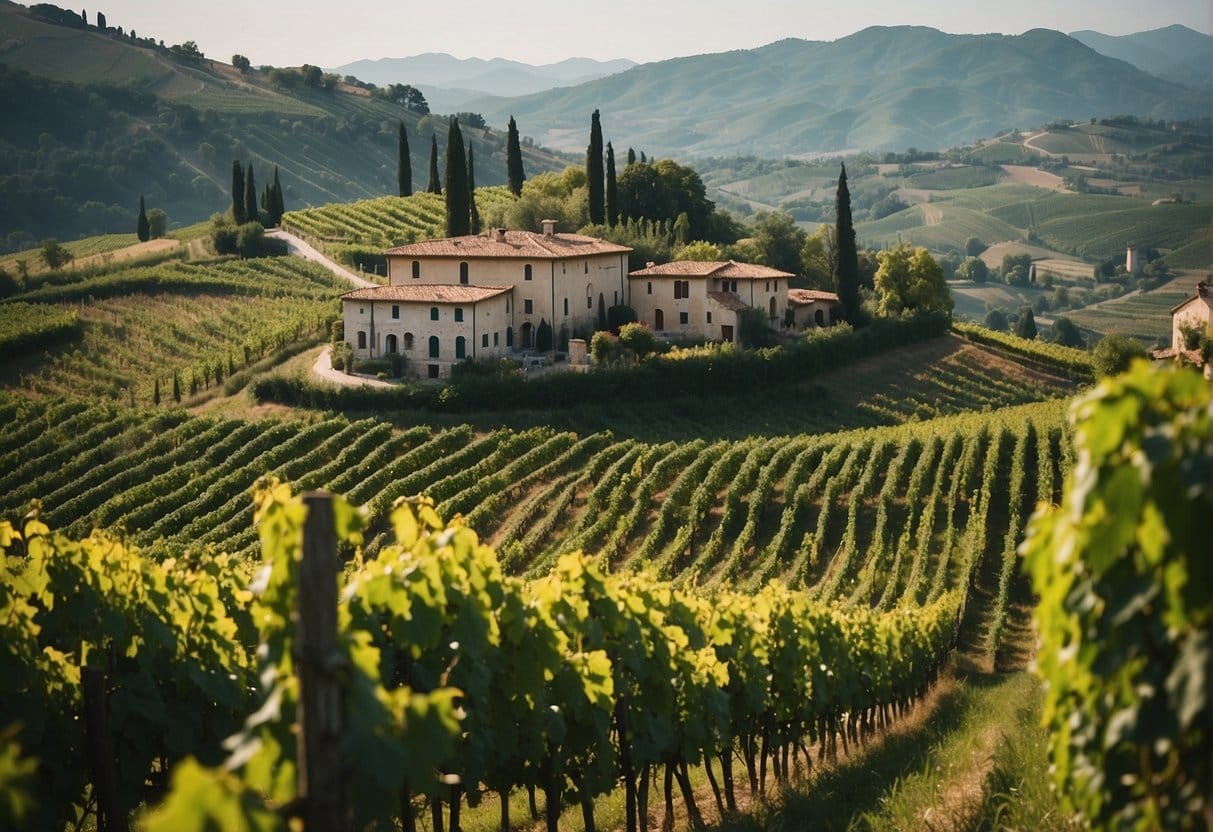
The Veneto wine region houses some of Italy’s most acclaimed wine-producing zones, each with distinct characteristics that contribute to the area’s storied vinicultural identity. Explore these zones to discover the diversity and richness they bring to the Veneto’s wine portfolio.
Valpolicella DOC
In the heart of the Veneto near Verona, you’ll find Valpolicella DOC, an exquisite area known for its rich red wines like the illustrious Recioto della Valpolicella and the acclaimed Amarone. This zone’s vineyards produce wines exhibiting deep cherry flavors and a range of styles from light to robust.
Soave DOC
East of Verona lies Soave DOC, celebrated for its delicate white wines crafted predominantly from the Garganega grape. The region’s volcanic soil lends a unique minerality to the wine, making your Soave tasting experience truly memorable. Wines from Gambellara, sharing similar terroir, also echo these enchanting traits.
Bardolino DOC
Along the sunny eastern shores of Lake Garda, Bardolino DOC captures your palate with light and fruity red wines. The blend primarily involves Corvina and Rondinella grapes, delivering refreshingly subtle wines with hints of red fruit—an elegant choice for wine lovers who favor a more delicate profile.
Garda
Garda, encompassing parts of the Veneto’s lake area and extending to Lombardy, offers a variety of wines including the Garda DOC. Here, the breezes from Lake Garda create a microclimate beneficial for growing a plethora of grape varieties, resulting in diverse and approachable wines.
Prosecco DOCG
Lastly, moving northwards to the cooler areas of Veneto, you’ll encounter the world-renowned Prosecco DOCG, particularly noted for its sparkling wines produced around the towns of Conegliano and Valdobbiadene. The steep hills and ancient techniques culminate in effervescent wines, bursting with crisp apple and pear flavors, that have captured hearts worldwide.
Cultural Insights
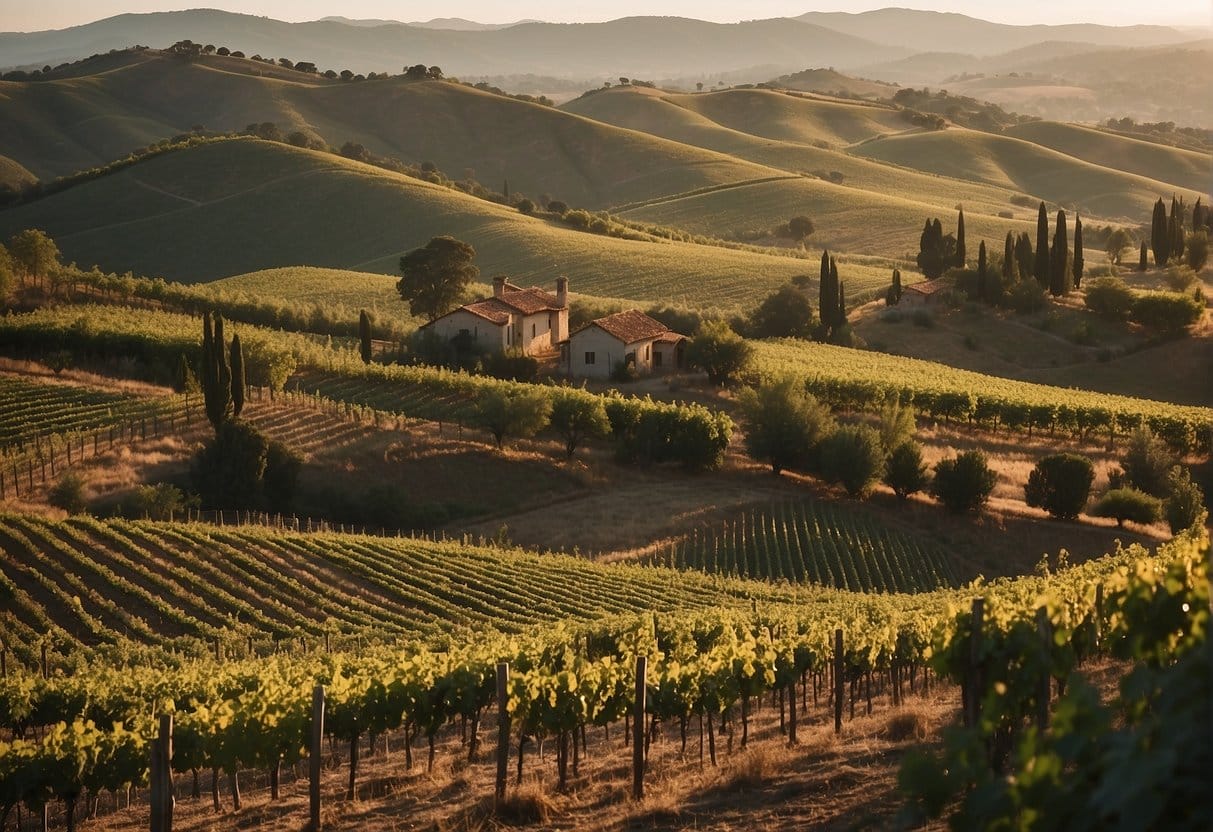
As you explore the Veneto wine region, you’ll discover a beautiful synthesis of culture and cuisine that reflects centuries of tradition and innovation. This area offers an authentic taste of Italy through its harmony between food and wine, complemented by the enriching experience of wine tourism.
Wine and Veneto Cuisine
In the Veneto region, your palate will delight in the local fare that perfectly pairs with the area’s diverse wines. You will find that the famed Italian wines like Valpolicella and Soave are not just beverages but an integral part of Veneto’s culinary identity. Take, for instance, the tradition of risi e bisi, a creamy rice and pea dish often enjoyed with a glass of crisp Soave, or the well-known polenta, which beautifully complements the richer notes of an Amarone.
Wine Tourism
Your journey through Veneto is incomplete without immersing yourself in wine tours and wine tasting experiences that this region proudly offers. In places like Venice, wine is a canvas for cultural expression, and local vineyards welcome you to indulge in this cultural artistry.
Whether you choose a guided tour through historic vineyards or a leisurely tasting session by the serene Lake Garda, you’ll gain insight into the meticulous winemaking process and the vibrant local wine community.
The Impact of Veneto Wines
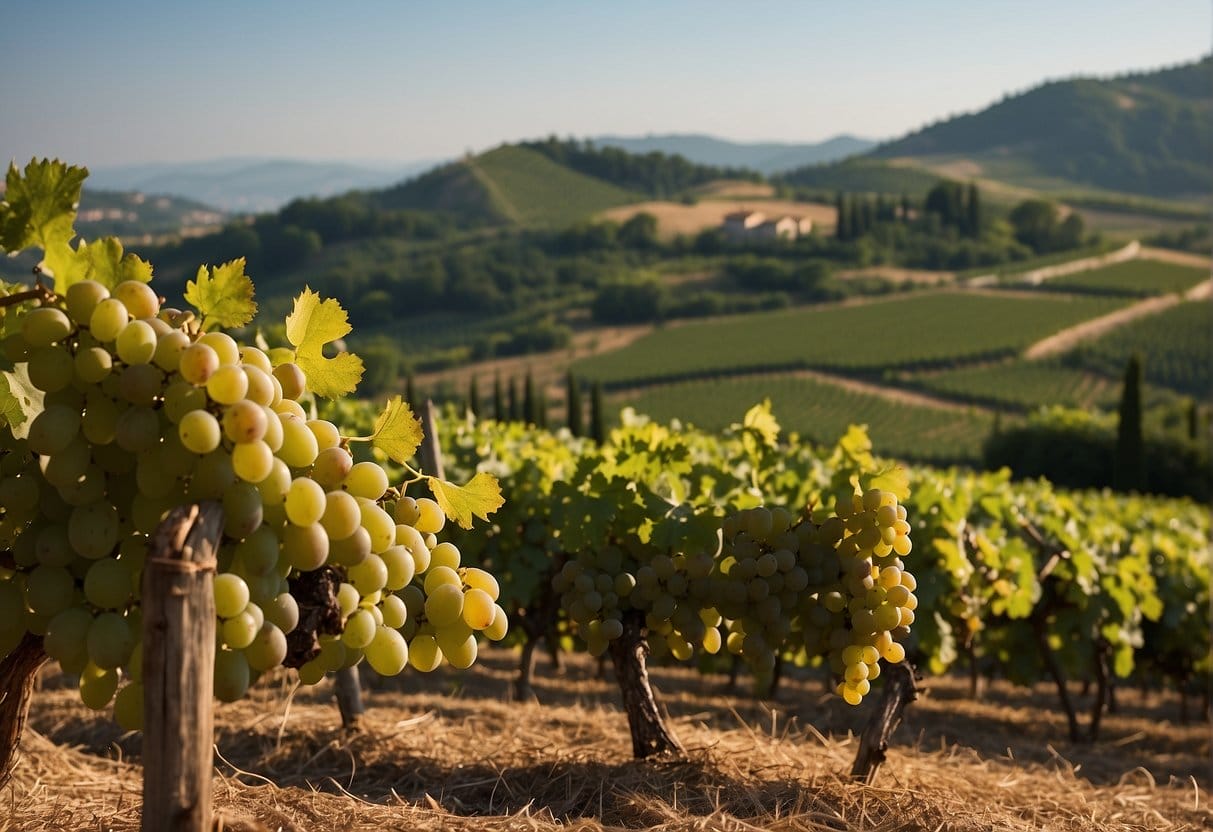
Veneto, as a leading Italian wine-producing region, holds a critical place on the world’s wine stage, with its varieties earning global accolades and enhancing Italy’s economic landscape.
Global Recognition
Your glass of Prosecco might be more than just a refreshing sip of sparkling wine; it represents Veneto’s contribution to the world of wines with global recognition. The region is not only a powerhouse in producing the ever-popular Pinot Grigio, but it’s also the heartland of some of the finest Italian wines distinguished under Denominazione di Origine Controllata (DOC) and Denominazione di Origine Controllata e Garantita (DOCG) titles.
From the robust Amarone to the versatile Soave, Veneto wines stand out on the global market, showcasing the versatility and complexity that Italian wines have to offer.
Economic Significance
When you explore the economic significance of Veneto wines, you’re delving into a story of remarkable economic benefits for both the local and national economies. With a substantial portion of its wines being sold under prized DOC and DOCG classifications, Veneto directly influences Italy’s wine-related tourism and export revenues.
The United States, a major consumer of Veneto wines, is a testimony to the region’s capacity to produce wines that resonate well beyond European borders, substantiating the economic prowess that the Veneto wine region wields on the international stage.
Recommended Visits and Activities
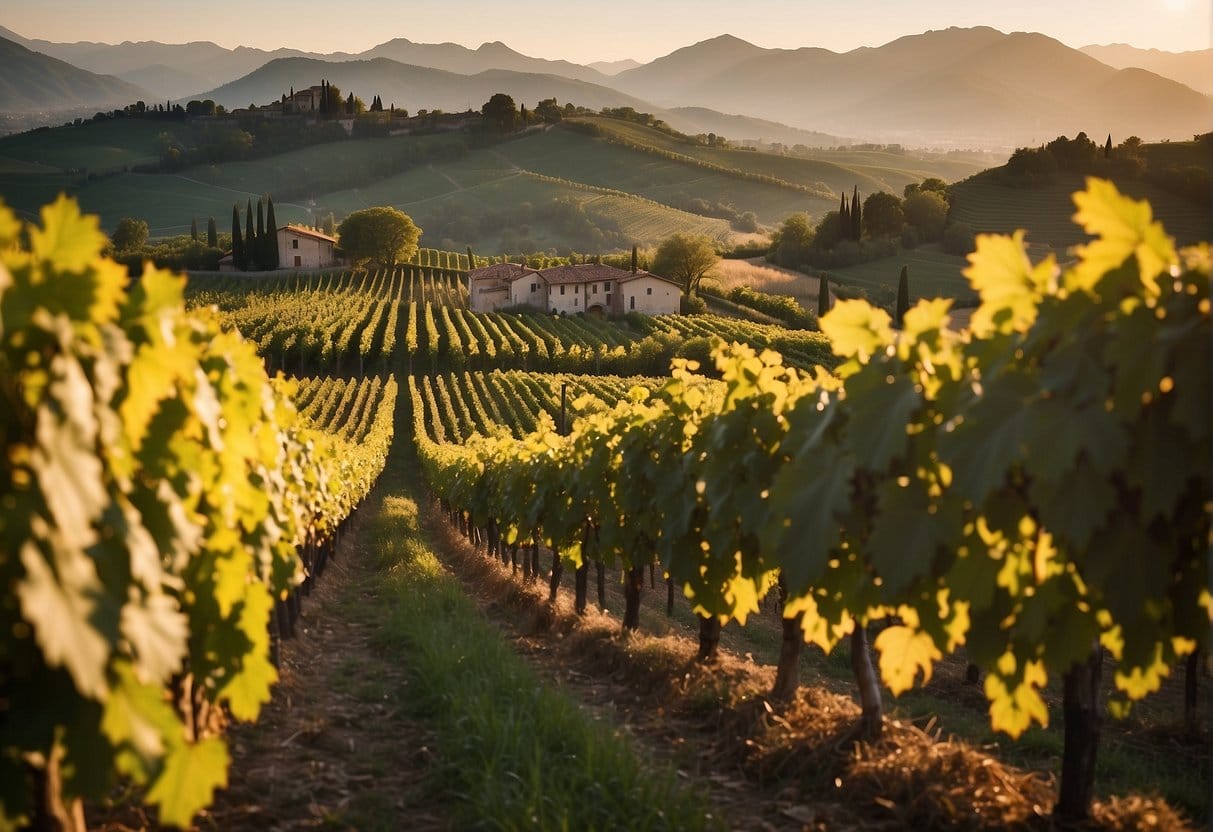
In the heart of Italy’s wine country, you’ll find a plethora of experiences tailored to the wine enthusiast and culture buff alike. From historical wineries near Treviso and Vicenza to the stunning Palladian Villas, every step is a story waiting to be savored.
Winery Visits
Exploring the Veneto wine region is a must-do activity for any wine lover.
- Casa Paladin: Combine your love for history with your passion for wine by visiting this estate, where traditional winemaking techniques meet modern innovation. You can book your visit to Casa Paladin and experience their exquisite blends that tell a tale of the Lison-Pramaggiore terroir.
- Villa Canthus: Trace the footsteps of winemaking history back to the mid-1950s and explore the family’s deep-rooted connection to the land. See firsthand how the Piave area has cultivated their splendid vines.
- Tenuta Baron: Set in a historical Villa of the 1600s, this winery offers a unique peek into the sophistication that characterizes the region’s winemaking philosophy. It’s an experience that ties together the pleasure of tasting with the beauty of ancient architecture.
Cultural Landmarks
Veneto brims with cultural gems that enhance your stay, transcending mere sightseeing.
- Palladian Villas: These are a testament to architectural genius and a staple in Veneto’s cultural landscape. The villas embody Renaissance grandeur and invite you to step back in time. Take a tour and admire the harmony of design that characterizes these landmarks.
- Cities of Art: Treviso and Vicenza offer more than just wine. They are dotted with museums, art galleries, and historical sites. Wander through these cities and let the cobblestone streets and ancient buildings tell you their age-old stories.
A trip to Veneto is incomplete without indulging in both its viticultural and cultural offerings. Craft your itinerary to blend immersive winery visits with the exploration of remarkable cultural landmarks for an unforgettable memory.
Frequently Asked Questions
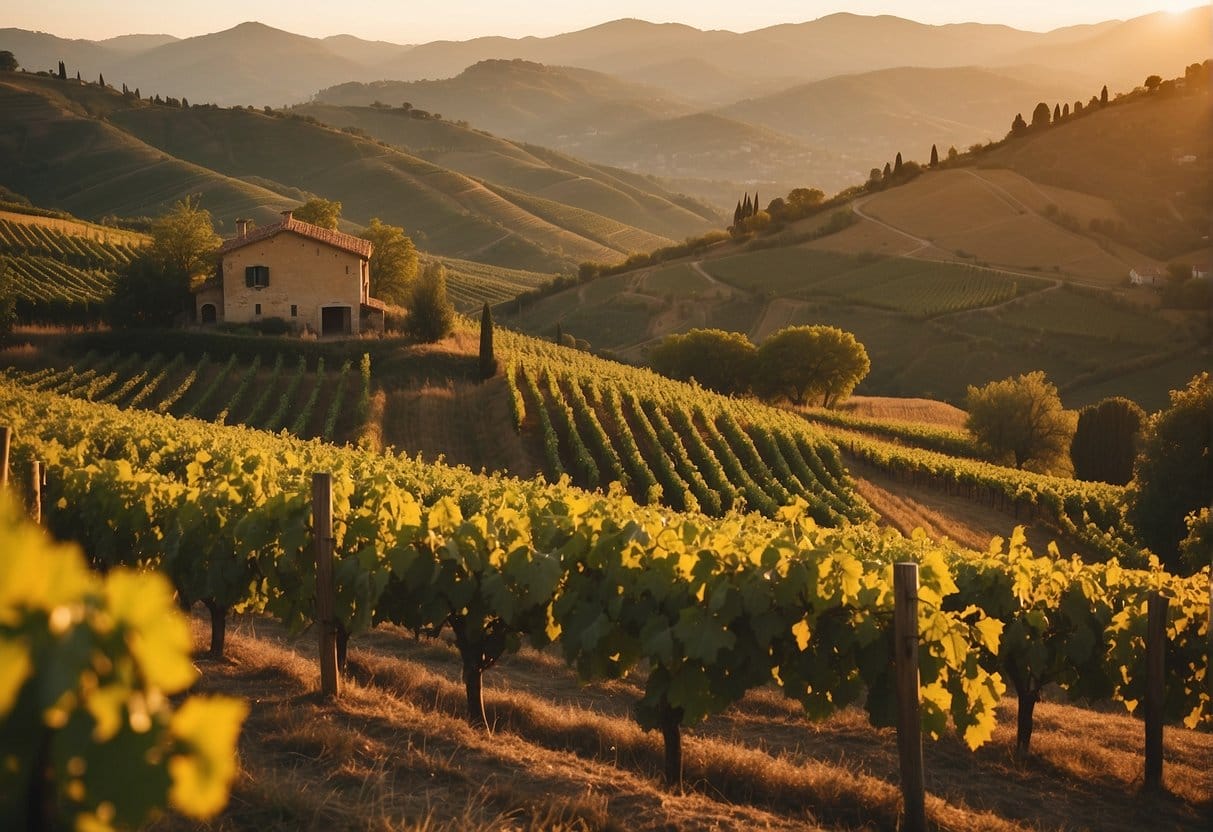
In this section, you’ll find answers to common curiosities about the Veneto wine region, from the distinct grapes to the intricate flavors that define its wines.
What types of grapes are used to produce red wines in the Veneto region?
Veneto is renowned for its red wines, particularly those made from the Corvina, Rondinella, and Molinara grapes. These varieties are the backbone of the region’s celebrated Valpolicella wines, including the prestigious Amarone.
How does the terrain of the Veneto wine region influence the taste profile of its wines?
The varied terrain of Veneto, from the Alpine foothills to the Adriatic Sea, imparts a unique taste profile to its wines. Cool climates in the north yield fresher, more acidic wines, while the warmer plains and coastal areas produce richer and rounder wines.
Which towns in the Veneto region are must-visit spots for wine enthusiasts?
For a true taste of Veneto’s wine culture, Valdobbiadene and Soave are must-visit towns. Valdobbiadene is the heart of Prosecco production, while Soave is renowned for its eponymous white wine.
Can you explain the differences between the wines of Veneto and Tuscany?
Wines from Veneto often exhibit a spectrum of flavors from light and zesty to deep and complex, influenced by the regional climate and winemaking techniques such as appassimento. In contrast, Tuscany is known for its bold, tannic, and often aged red wines like Chianti and Brunello di Montalcino.
What are some characteristic flavor notes of Veneto white wines?
Veneto white wines, such as Soave and Pinot Grigio, are known for their crisp acidity and flavors of green apple, almond, and citrus. These wines are often described as refreshing with a mineral undertone.
How do the price points vary for Veneto wines, and what factors contribute to this variation?
Veneto wines span a wide price range, from budget-friendly to luxury options. Factors influencing price include the winemaking process, aging potential, and DOCG status, with wines like Amarone typically commanding higher prices due to their intensive production methods.
